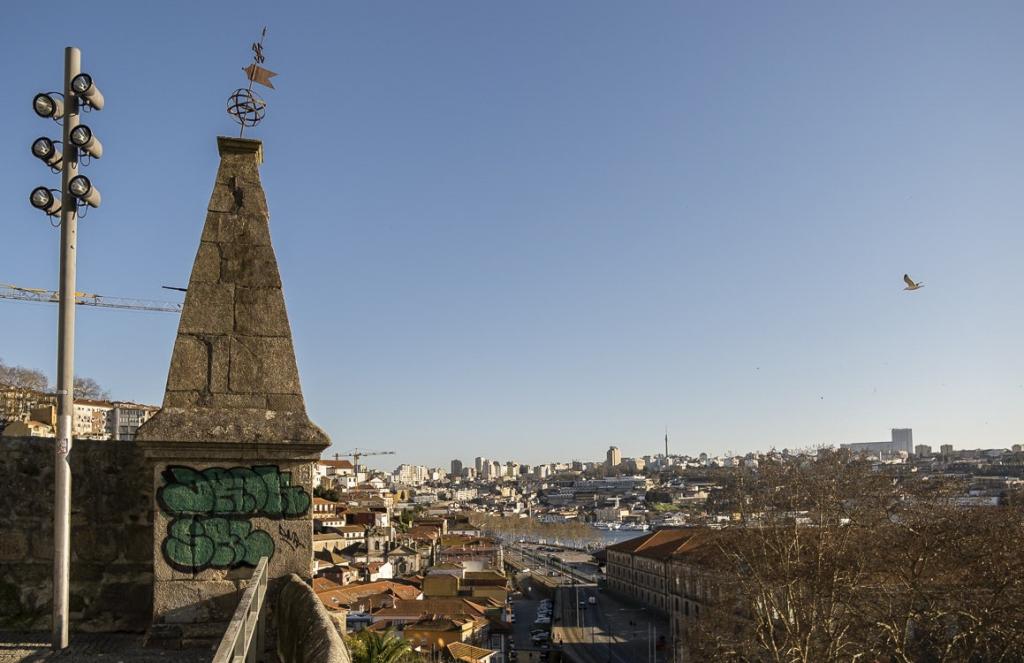Thessaloniki gets ready for its metro launch in November
The underground rapid transit lines have been under construction for almost two decades due to various project delays
 TheMayor.EU logo
TheMayor.EU logo 
The health flag has been immortalized in a metal rendition, but the column supporting it is the original one, Source: Porto Municipality / Filipa Brito
The Health Flag stone column still stays vigilant, nowadays as a monument
Pandemics, such as the one we are all collectively going through are nothing new to humanity and European cities have a long history of having to deal with them coming up in the process with peculiar rules, innovations and restrictions.
A potent reminder of this is the Bandeirinha da Saúde stone column which overlooks the Portuguese city of Porto and the Douro River below. Its name translates to a ‘little health flag’ referring to the piece of cloth which used to be raised some 400 years ago in times of plague epidemics to indicate to incoming ships that they will have to undergo inspection before entering the city.
In a way, the flag, which was raised on the column at a point where it can be easily seen, was also an indicator that the city was healthy and it intended to stay that way. That did not mean cutting itself off from the surrounding world of trade and commerce. Quite the opposite, since it has always been a major point for the export of Portuguese wines – now you know where the word ‘port wine’ comes from, too.
Nowadays, you have to show a green pass to enter many facilities or countries, and the health flag was there to serve the purpose of a health facility at the customs.
1633 is the likely date for the completion of the construction of the granite pyramid which supported the flagpole, a work completed by master Bastião Fernandes, which still stays. Today, however, there is an iron flag mounted on top to serve as a reminder of these days. The flag station served its purpose for more than a hundred years.
Several centuries later, this object and the practice associated with it continue to arouse interest and curiosity. The "health flag" will be the protagonist of a session, promoted by the City Museum within the scope of the Sonda operative program - a cycle of conversations with guests around themes of the city of Porto's architectural, artistic or archaeological heritage.

The underground rapid transit lines have been under construction for almost two decades due to various project delays

Now you can get your wine in Talence by paying directly in Bitcoin

That’s because the state has to spend money on updating the railway infrastructure rather than subsidizing the cost of the popular pass

Rethinking renewable energy sources for the urban landscape

The examples, compiled by Beyond Fossil Fuels, can inform and inspire communities and entrepreneurs that still feel trepidation at the prospect of energy transition

Now you can get your wine in Talence by paying directly in Bitcoin

The 10th European Conference on Sustainable Cities and Towns (ESCT) sets the stage for stronger cooperation between the EU, national and local level to fast track Europe's transition to climate neutrality.

At least, that’s the promise made by the mayor of Paris, Anne Hidalgo

The underground rapid transit lines have been under construction for almost two decades due to various project delays

At least, that’s the promise made by the mayor of Paris, Anne Hidalgo

Hostal de Pinós is located in the geographical centre of the autonomous region

Despite its church-y name, the district has long been known as the hangout spot for the artsy crowds

Urban dwellers across the EU are having a say in making their surroundings friendlier to people and the environment.

Forests in the EU can help green the European construction industry and bolster a continent-wide push for architectural improvements.

Apply by 10 November and do your part for the transformation of European public spaces

An interview with the Mayor of a Polish city that seeks to reinvent itself

An interview with the newly elected ICLEI President and Mayor of Malmö

A conversation with the Mayor of Lisbon about the spirit and dimensions of innovation present in the Portuguese capital














